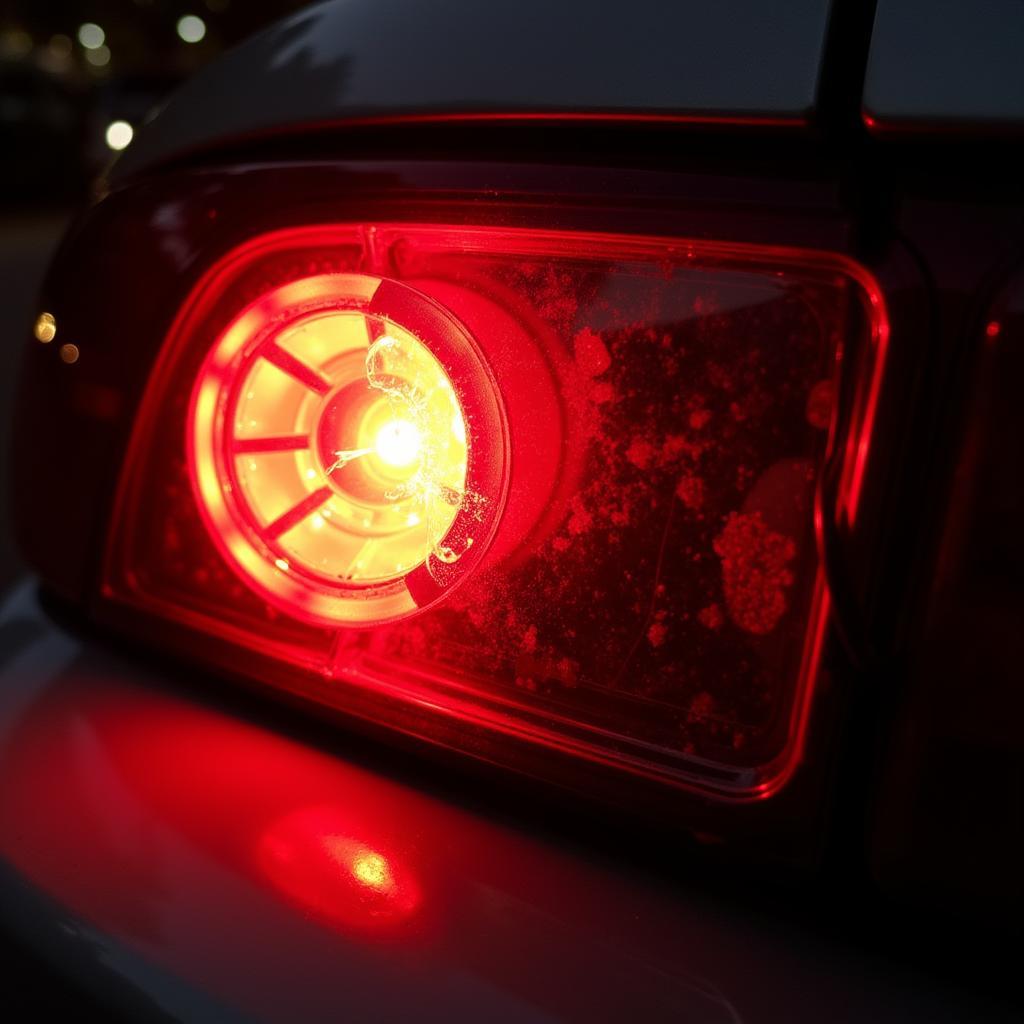The brake lamp warning light on your 2000 Honda Accord is a crucial safety feature, alerting other drivers when you’re slowing down or stopping. If this light illuminates on your dashboard, it signals a problem within the braking system that requires immediate attention. Ignoring this warning could compromise your safety and that of other road users.
This comprehensive guide will delve into the common causes behind a 2000 Accord brake lamp warning light and provide you with potential solutions, empowering you to address this issue effectively.
Understanding the Warning
The brake lamp warning light is designed to illuminate when you depress the brake pedal. If the light stays on constantly, flickers intermittently, or fails to light up at all, it indicates a malfunction within the system.
Common Culprits Behind the Warning Light
Several factors can trigger the brake lamp warning light on your 2000 Accord. Here are some of the most common culprits:
1. Blown Brake Light Bulb
This is the most frequent cause. Like any other bulb, brake light bulbs have a limited lifespan and can burn out over time.
Solution: Inspect all brake light bulbs and replace any burnt-out ones.
 Blown Brake Light Bulb
Blown Brake Light Bulb
2. Faulty Brake Light Switch
The brake light switch, located above the brake pedal arm, activates the brake lights when the pedal is pressed. A malfunctioning switch can prevent the lights from illuminating correctly.
Solution: A faulty brake light switch will require replacement.
3. Damaged Wiring or Connectors
Wires and connectors within the brake light circuit can become damaged due to wear and tear, corrosion, or accidental disconnections.
Solution: Inspect all wiring and connectors for any signs of damage, repairing or replacing them as needed.
4. Blown Fuse
The brake light circuit is protected by a fuse. If this fuse blows, the brake lights won’t function.
Solution: Locate the brake light fuse in your Accord’s fuse box and replace it if it’s blown. Consult your owner’s manual for the correct fuse location and amperage.
 Accord Fuse Box Diagram
Accord Fuse Box Diagram
5. Faulty Brake Lamp Socket
Corrosion or damage to the brake lamp socket can prevent the bulb from making a proper electrical connection.
Solution: Inspect the sockets for any signs of damage or corrosion. Clean or replace as necessary.
Seeking Professional Assistance
While some of these issues can be addressed with basic DIY skills, others might require the expertise of a qualified mechanic. If you’re unsure about diagnosing the problem or performing the repairs yourself, it’s always best to err on the side of caution and seek professional help.
Expert Insight: “Attempting to repair electrical systems without proper knowledge can be dangerous,” warns John Smith, Senior Automotive Technician at ABC Auto Repair. “If you’re uncomfortable working on your car’s electrical components, it’s best to leave it to the professionals.”
Preventive Measures
Regularly checking your brake lights and addressing any issues promptly can prevent more significant problems down the line. Consider these preventative measures:
- Routine Inspections: Inspect your brake lights monthly to ensure they are functioning correctly. Have a friend press the brake pedal while you check each light.
- Timely Bulb Replacement: Replace brake light bulbs every two years or as needed.
- Corrosion Prevention: Periodically clean the brake light sockets and connectors to prevent corrosion buildup.
Conclusion
A glowing brake lamp warning light on your 2000 Honda Accord shouldn’t be ignored. Understanding the common causes and potential solutions outlined in this guide can help you address the issue effectively and ensure your safety on the road. If you’re in doubt, remember that seeking professional help is always a wise decision. By prioritizing regular maintenance and prompt repairs, you can keep your Accord’s braking system in optimal condition for years to come.

